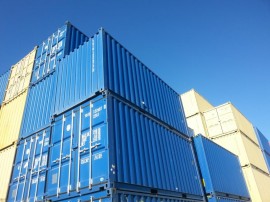Disaster Recovery to Long Term Accommodation – it’s in the box

The approach is outside the box thinking…or perhaps inside the box, as New Zealand’s Christchurch sought a quick but safe approach to getting businesses affected by the 2011 earthquake back on their feet.
The Cashel Mall was given a much needed boost following the earthquake, so together, Re:START and architects The Buchan Group, created a retail hub using shipping containers.
A snippet from an article on the Re:START website, says project architect, Anton Tritt, of the Buchan Group, said shipping containers had been chosen for the precinct because they were strong. They could also be reused at a new site if landowners decided to put up more permanent buildings.
The site is made up of 60 shipping containers that were welded together to form 27 individual tenancies within the Re:START project. The use of shipping containers allowed them to be quickly assembled and modified with a majority of the conversions happening on site.
The precinct is home to a variety of fashion boutiques, cafes and specialty shops, and while it was meant to be a temporary solution, many of the containers still remain today as the project fast became a favourite with locals and tourists alike. Architects The Buchan Group won the New Zealand Architecture Award in Planning and Urban Design in May 2013 for their involvement in the Re:START project.
Meanwhile, across the other side of the world, Urban Space Management Ltd in London, UK, have dedicated their core business to creating and building structures using shipping containers. Container City was established to provide fast, innovation and highly versatile systems that create affordable and adaptable spaces. One of their notable projects was the BBC’s eco-friendly studio at the Stratford Olympic Park. Built with the environment is mind, it featured three stories of containers and a specially designed class terrace – providing spectacular views and an ideal position for the BBC to broadcast live from during the Olympics.



